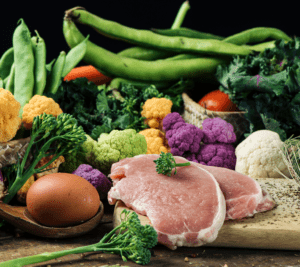The Flexitarian Diet – Everything You Need To Know
New to the Flexitarian Diet? Don’t worry, we got you covered. This new diet trend is going to sweep the world soon. Find out everything about the Flexitarian diet below!
What is the Flexitarian Diet?
The Flexitarian Diet is a style of eating that encourages mostly plant-based foods while allowing meat and other animal products in moderation. As such, it is more flexible and not as strict as a full vegetarian or vegan diet, where you can prioritize plant foods while enjoying meat in moderation.
Created by registered dietitian Dawn Jackson Blatner, The Flexitarian Diet aims to help people gain the benefits of both worlds : vegetarian and non-vegetarian. This diet also eliminates calorie counting and is really flexible that it’s considered more of a lifestyle than a certain diet regime.
If you’re someone who prefers clean eating with mostly vegetables or plant-based foods, while also don’t want to cut out meat completely, the Flexitarian Diet may just be the perfect solution for you!
The Principles of The Flexitarian Diet
Since the Flexitarian Diet can be quite vague, try to follow these guidelines when you plan to practice it :
- Eat mostly fruits, vegetables, legumes and whole grains.
- Focus on protein from plants instead of animals.
- Be flexible and incorporate meat and animal products from time to time.
- Eat the least processed, most natural form of foods.
- Limit added sugar and sweets.
As stated, the focus of Flexitarian Diet is centered on what you can eat instead of what you can’t – with the exception of processed and sugary-rich foods. If you want to be specific, there is also a guideline of the amount of meat per week you can consume as shared by Blatner the founder.
Depending on your commitment, there is room for up to 28 ounces of lean meat or poultry per week — though as you add more delicious vegetarian meals to your roster, you may drop down to just 3 ounces of meat up to three times a week. For weight loss, Blatner recommends to stick to a Flexitarian diet that provides around 1,500 calories per day.
How Healthy Is The Flexitarian Diet?
It may be hard to really assess the health benefits of going semi-vegetarian with the Flexitarian Diet. However, a 2017 review found that people who follow a semi-vegetarian diet had lower body weight than those who regularly ate meat, as well as lower incidence of metabolic disease and lowered risk for type-II diabetes.
Other possible health benefits also include : improved heart health, due to the diet that is rich in fiber and healthy fats, weight loss due to the control of processed foods and sugar, and preventing cancer, all thanks to a healthier choice of fruits, vegetables, nuts, seeds and whole grains.
Additionally, the Flexitarian diet is also believed to be healthy for the environment. As we consume less red meat, it is linked to the decrease of greenhouse gas emissions, as well as land and water use.
However, there is a concern of nutrient deficiencies if someone cuts back too much on meat products, such as Vitamin B12, zinc, iron, calcium and Omega 3 fatty acids. To avoid this from happening, do include a wide range of animal products, such as:
How To Start the Flexitarian Diet?
If you’re used to eating meat and simply want to cut down, you can break it down into three different levels of the diet
- Beginner: Start by having just 7 meatless meals a week, out of the total 21 meals. This means that you’re still eating meat 2 out of 3 daily meals. For example : meatless breakfast and regular lunch/ dinner.
- Advanced: Aim for up to 14 meatless meals a week, which means you still get to eat your burger or turkey sandwich once a day.
- Expert: At this level, you’re only eating meat 6 or less times per week — or going entirely meatless for weeks, only indulging on special occasions. Save your meat meals for special occasions, such as for weekends, family meals or holiday.
When you do eat meat, consider it a side dish instead of the main. Replate your portion into a quarter of meat and another quarter filled with whole grains, and then the remaining 50% vegetables.




